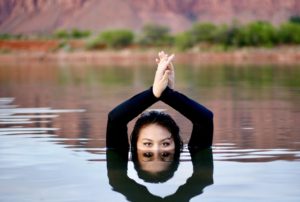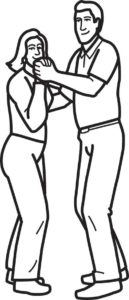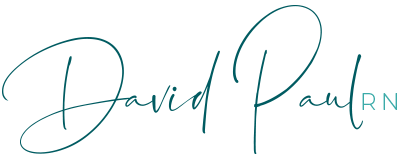
The assertions I put forward in this blog site are not self evident. If they were there would be no reason for me to write this blog, or, reason for anyone to read it. Neither do I put them forth for instant understanding or outcome. Like a large building or other complex project it will take some time before the permanent shape of things are realized.
Some movements are explained that immediately demonstrate the principles and effects desired. For permanent structural changes though, the movements must become habits, the habits maintained. To begin, I suggest we start to gain an understanding of what habits have led to the deformed bodies and back ache we see today in the west.
Do You Know?
Why is mainstream posture instruction so arbitrary, contradictory, confusing and vague that it could be considered unhealthy?
What it is about Perfect Posture instruction that is so natural, sensible and different that it could be considered the Anti posture?
Can you guess?
To shout Everything! or, All of it! to both questions would be incorrect. An exaggeration.A failure to look at the big picture. After all, Perfect Posture does share a lot of terminology and ideals with mainstream posture instruction.
The difference is in description and definition, structure and appearance, time and season of use.

It’s hard to tell where one starts and the other ends.
The differences appear subtle at times because both are normal patterns in the range of human movement. It’s hard to tell where to draw a clear line between formal and informal posture. What is the difference between a cultured and primal posture, a Type 1 and Type 2 position.
It’s just that common or proper posture is overused and is considered to be the only way of standing, walking or sitting. This causes proper posture to be approached as static, frozen or rigid in nature. It’s something to be maintained.
Informal, posture instruction as shown in my Perfect Posture instruction, on the other hand, is under considered. In Perfect Posture instruction, movement, centered around an axis is the focus. Both types may be essential for our species. But the outcome of each, if used improperly, is clearly harmful.

Position is never “held” except at the beginning
Advocates of both types would agree that poor postural habits will cause slumping round shoulders, backaches, joint and hip arthritis, headaches, sciatica, scoliosis, pinched nerves, muscle spasms and a host of other problems.
Also anti posture sounds like something against proper posture. It’s not. Perfect Posture is a different focus within the normal range of human body mechanics. Informal body mechanics is it’s focus. The kind you should use in your home and activities of daily living. That these principles have relevance is exhibited by the surge of back problems in developed countries only. Also the surge of ergonomically related products.
Motion, Balance, Muscle Sense
With Perfect Posture principles, as instructed in this website, Perfect Posture position is found through motion, balance, and muscle sense. It’s not found by external measurement or appearance. This important difference, and others, make Perfect Posture instruction so opposite, so different, so sensible, so… anti-posture, from mainstream posture instruction.
There are several other reasons why Perfect Posture is the anti-posture. One of these reasons is a central tenant of Perfect Posture methods. This tenant is to never hold or maintain the body in any position while standing, sitting or walking.
Most experts seem to instruct or imply to hold the body in a rigid, frozen, motionless position or ideal while standing, walking, or sitting. It’s usually called something like “proper posture”, “correct posture”, “good posture”.
Something along those lines.
With Perfect Posture principles the body, except for the legs, should be relaxed in any circumstance. It should never be held motionless. Never maintained in any position or pose to achieve or measure a naturally balancing posture and curve to the spine.
In these respects, and others you will learn about, Perfect Posture instruction is so different it could also be called a different type of posture. This blog post and future blogs will focus on this difference of type and the implications for you.
This idea of two posture types of instruction, with reviews and examples of instruction favorable to each type will be reviewed in future blogs.
Also, I never grew up wanting to be a doctor, or, most assuredly a nurse. I consider myself an outsider to modern medicine and not easily led. I was never blinded by the glamour of modern medicine.
I’ve never had a blind infatuation with modern medicine and consider it more of a monster than miracle. I’ve had a front row seat to watch how people stand, walk and sit. I’ve watched for over 40 years how certain bio-mechanical habits have affected the shape of client’s bodies.
I’ve watched what they eat, what drugs they take and how their body and behavior acts in response. In other words, what diseases are associated with what diets and habits.
Therefore, with 40 years experience, I’m in an optimum position to view medicine with an unbiased eye.
Two Types of Posture
To start, in this blog site I’ll build an identity for two types of posture so you can gain an understanding of why Perfect Posture and related instruction is so different. In the end I’ll call mainstream posture “Type 1” posture. Alternative posture will be called “Type 2” posture. I’ll do this in three ways:
First: Common words or descriptions associated with Type 1 and Type 2 will be given.
Second: Definitions associated with Type 1 posture and Type 2 friendly posture sources will be given.
Third: Characteristic instruction from type 1 and type 2 sources will be given and reviewed.
When and where each type should be used will be explained to enhance understanding of the difference. In this way, another understanding of the distinctive characteristics of each type will also demonstrated.
In the next few blogs I’ll review several type 1 and Type 2 instructors. I’ll build on an understanding of the differences between the two one board at a time, structurally speaking, so you can have a clear picture of the differences between these two concepts. So as not to wear out your reading muscles the posts will review one type and its characteristics at a time.
This website contains links to Perfect Posture friendly products, from furniture to exercise machines and are provided to assist with establishing a Perfect Posture lifestyle outside of the formal or Type 1 environment we’re all so used to.

